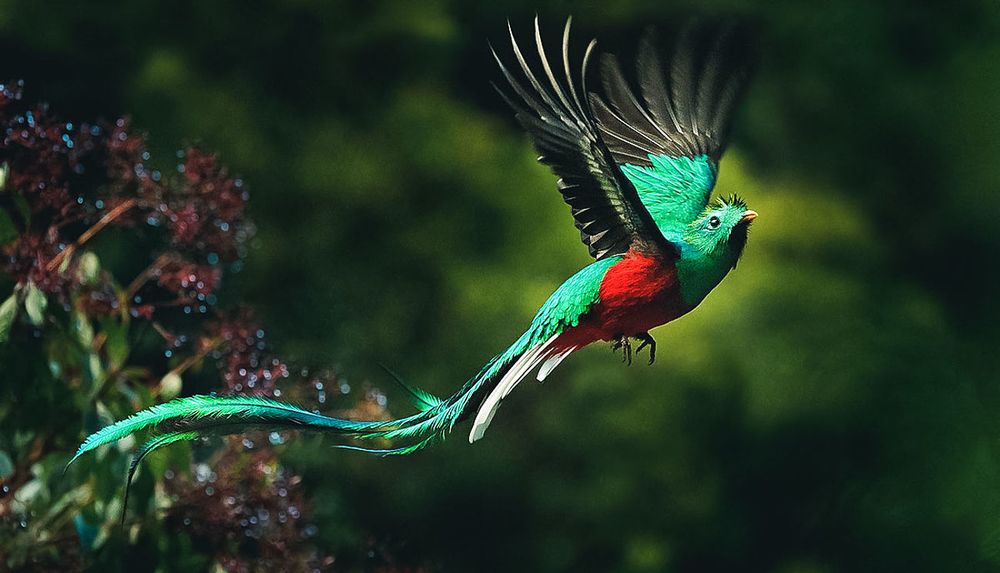The enchanted Galapagos Islands are located in the Pacific ocean some 1000 km off the Ecuadorian coast. The Galapagos province and region is formed by 8’010 sq.km of volcanic islands, islets, rocks and boulders, and 70’000 sq.km of marin area. Barely 18.700 residents live on the archipelago, only the islands of San Cristóbal, Isabela and Santa Cruz are inhabited. Although directly on the equator the climate is not tropical all year as one would expect. From January to May the climate is typically tropical: deep blue sky, hot but pleasant air temperatures, and occasional short downpours which dive the islands in a vivid green, – but from June to August it is rather cool and misty and the vegetation dries up, even the succulent palo santo tree drops his leaves. The average temperature on the Galapagos Islands is 23ºC (16º-30ºC).
As the result of continuous volcanic activity and heavy underwater eruptions the Galapagos islands emerged some four million years ago from the pacific sea-bottom. Evolution, ocean currents, climate, and the lack of predatory enemies -including man- made the Galapagos a living museum of evolutionary changes, indeed one of the strangest and most compelling places on our planet. Flora and fauna, arriving across the waters from the mainland, colonized the original Galapagos lava beds, developing species unique to the world. Many of the invertebrates, 25% of the fish, 30% of the plants, half of the birds and all of the Galapagos reptiles are endemic to the Galapagos.
Among the animals found are the different species of giant ‘Galapagos’ tortoises that gave the islands their name due to the similarity of their carapaces to a British riding saddle called ‘galapago’ in Spanish. A variety of birds are found: blue footed, red footed and masked boobies, frigate birds, albatrosses, flamingos, unique penguins and non-flying cormorants, and 14 different species of finches. These various species of finches served as proof for Darwin’s theory of evolution from natural selection. Marine mammals such as sea lions, dolphins and whales are also found; as well as multitudinous colorful fishes. The most distinctive plants are mangroves and endemic cacti.
The Galapagos Islands were declared National Park by the Ecuadorian government in 1959. 6’937 sq.km, about 87% of the island territory are protected and carefully managed. Visits are allowed only to about 50 sites, in addition to the islands’ few towns: Puerto Baquerizo Moreno, Puerto Ayora and Puerto Villamil. The UNESCO declared Galapagos as a World Natural Heritage Site in 1978 and a World Biosphere Reserve in 1985. The Charles Darwin Station in Santa Cruz is leading and coordinating all activities and efforts to preserve the ecosystem of the area and developing educational and conservation projects.
The interior waters of the Galapagos Islands, plus those within 40 nautical miles measured from the baseline of the Archipelago, were declared the Galapagos Marine Reserve on 1994. This is the only protected coastal marine area in the east Pacific, and the second largest Marine Reserve in the World.
It holds approximately133,000 sq.km , including 50,129 sq.km of the interior waters of the Archipelago. There are many areas with small submarine volcanoes, which are important feeding zones for marine birds and mammals. The submarine area of Galapagos (from 0 to 200 mt deep) is of 6,700 sq .km.
The most popular way to discover the islands is by boat on a Galapagos Cruise, although land-based day tours and scuba diving tours are also offered. A variety of boats are available for Galapagos cruises, ranging from shaky sloops, to luxurious air-conditioned sailing yachts, eco-catamarans and mid-sized cruise ships. Cruises vary in length from four to fifteen days.
Most of the yates offer similar itineraries and visit comparable sites, so boat class, price and trip length might be considered also when booking a trip. Besides the comfort of their accommodations the main differences between the varying boat classes is often the experience of the naturalist guides and the crew. Yates in the midrange category of superior tourist class and up should have bilingual naturalist guides with a university degree.
To get the most out of your Galapagos journey, we recommend to schedule at least 6 days for you tour. Don’t miss the opportunity to snorkel with sea lions, penguins, a variety of colorful fish and even inoffensive sharks! Diving courses and tours are also offered for those who are willing to take a deeper adventure!
